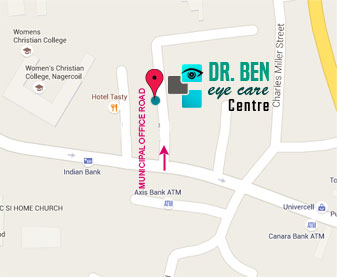
Why Eye Donation?
Eye donation is donating the eyes after a person's death. Eyes are very valuable part of a human being, which should not be wasted either by burning or burying the body.Donation of the eyes gives sight to TWO Corneally blind persons, enabling them to come out of their dark and dreary life into a life full of colors, a life where they can see and enjoy this beautiful world.
Corneal disease is a major cause of blindness responsible for 7.1% of blindness in India. Recent data reported that only 10 % of the required 400,000 corneas are being procured annually.
Who all can donate their eyes?
Age does not matter while making this precious donation. Person suffering from Diabetics, Hypertension, Systemic disorders like Asthma and Tuberculosis CAN ALSO donate their eyes. Cataract surgery patient can also be a happy donor. Above all, all Religions endorse the practice of eye donations and its one great valuable service a person can do in his/her life.
Who all CANNOT donate their eyes?
Eyes will not be collected if death has occured due to the following diseases.
- AIDS / Hepatitis B
- Septicemia / Sepsis: Viral Infection spread thru bloodstream affecting vital organs
- Leukemia: Disease related to Bone Marrow
- Rabies: Fatal viral disease, transmitted by the bite of warm-blooded animals like dogs
- Cancer with Metastasis to Head and Neck: Transmission of pathogenic microorganisms/cancerous cells thru blood vessels.
- Encephalitis: Inflammation of the brain
- Hodgkins Lymphoma: Cancerous growth of cells in the Lymph system of the body.
Process Of Eye Donation
Pledging for eye donation procedure:
Eye donation can happen in either of these two ways.
- She/He can walk in to a nearest Eye Bank and PLEDGE their eyes for donation. For this, a pledge form needs to be filled, signed by a witness (can be your relative/friend) and given back to the eye bank. In the time of that person's death, his/her relative/friend, who was a witness for the pledge form or any other family member/friend who had the knowledge that the person who passed away intended to donate the eyes, should call the nearest eye bank. One important aspect to be noted here that it is not sufficient if a person pledges for donating his/her eyes after the death. His/her relatives and friends should be well informed and be well aware to call the nearest eye bank, for donating the eyes after their death.
- After death, a relative or a friend of the deceased person can inform the eye bank and tell them that they wish to donate the eyes of their bereaved folk.
Donating procedure:
Once a death of a person happens in your family or in your friend's family, pick up the phone and dial to the nearest eye bank. Please note that this should be done WITHIN 6 hours of the death. Give the eye bank officials the location of the house along with a landmark so that they can come soon and collect the eyes. These eyes will be giving a new life for 2 blind people.
Important points to be taken care after a person's death, before eye donation:
After the death of a person:
- Call the nearest eye bank within SIX HOURS of the death of the person.
- Switch off fans & keep AC on, if you have one.
- Close the eye lids gently and keep a moist cloth over the eyes.
- Raise head with a pillow.
Eye Banks
An eye bank is a non-profit community organization managed by a medical director, eye bank manager and eye bank technicians. It collects, evaluates and distributes the eyes donated by the loved ones. All eyes donated are evaluated using strict medical standards.
Those donated eyes found unsuitable for transplantation are used for valuable research and medical education Functions of the eye bank
- Availability of trained staff round the clock to attend the calls.
- Evaluate and provide quality corneas to corneal surgeons
- Enable corneal research using eyes unsuitable for grafts to find newer techniques, improve preservation methods and train corneal surgeons.
- Increase public awareness about eye donation and eye banking.What happens after eye donation?
- The donor's family receives a certificate of appreciation from the eye bank.
- The eyes are taken to the eye bank and evaluated by trained staff.
- They are preserved in a solution of Optisol GS and refrigerated. This solution contains chemicals and drugs that are needed to keep the living cells of cornea healthy and functional.
- Tests are carried out and the report is sent to the corneal surgeon
- The eyes are used for a corneal transplant operation within 72 hours, but with present day availability of special storage media the eyes can be stored for a longer time before being transplanted.
- The recipient is chosen from the eye bank's waiting list and called for corneal transplant.
- Neither the patient knows whose cornea is used for him, nor the relatives of the donor know who has received the cornea. This information is strictly confidential.
- Periodic follow-up of the recipient is done over time to ensure that the graft is successful.



